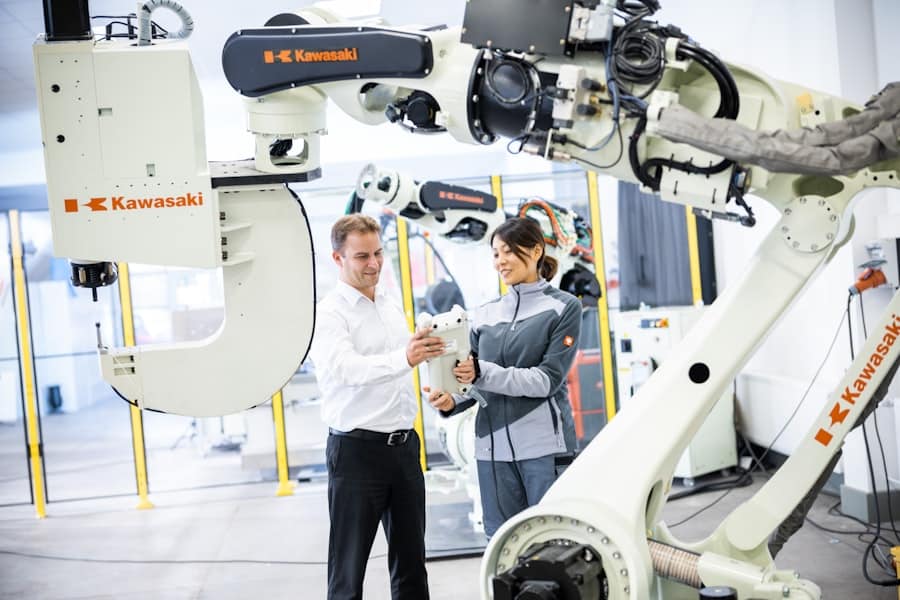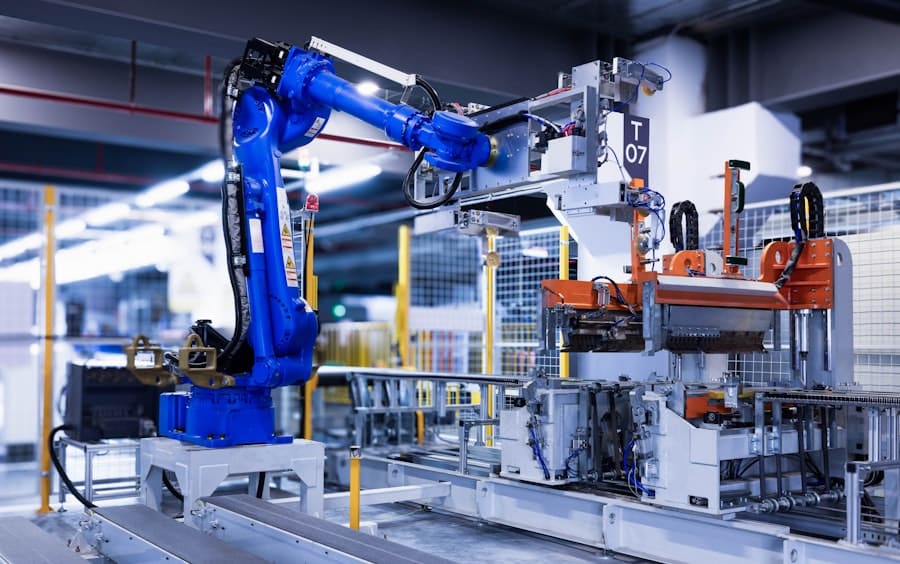The integration of robotics into prosthetic design marks a significant evolution in the field of rehabilitation and assistive technology. Historically, prosthetics were rudimentary devices that provided basic functionality, often at the expense of comfort and usability. However, the advent of robotics has transformed these devices into sophisticated tools that can mimic the natural movement of human limbs.
This shift is not merely technological; it represents a paradigm change in how we understand disability and rehabilitation. The fusion of robotics with prosthetic design has opened new avenues for enhancing the quality of life for individuals with limb loss, allowing them to regain autonomy and engage more fully in daily activities. Robotic prosthetics leverage advanced sensors, actuators, and control systems to create devices that respond dynamically to the user’s intentions.
For instance, modern prosthetic limbs can detect muscle signals through electromyography (EMG) and translate these signals into movement, enabling users to perform complex tasks with greater ease. This level of responsiveness is a far cry from traditional prosthetics, which often required significant effort and adaptation from the user. As we delve deeper into the impact of robotics on prosthetic functionality, it becomes clear that this technology is not just about replacing lost limbs; it is about enhancing human capabilities and redefining what it means to live with a disability.
Key Takeaways
- Robotics has revolutionized prosthetic design, leading to significant advancements in functionality and customization.
- Prosthetic materials and technology have evolved, allowing for more natural movement and improved comfort for users.
- Artificial intelligence plays a crucial role in prosthetic design, enabling better control and adaptability for users.
- Robotics has enabled customization in prosthetic limbs, allowing for personalized solutions to meet individual needs.
- The future of robotics in prosthetic design holds great potential for further improvements in functionality and user experience.
The Impact of Robotics on Prosthetic Functionality
The functionality of prosthetic limbs has been revolutionized by robotic technology, which has introduced features that significantly enhance user experience. One of the most notable advancements is the development of bionic limbs that can replicate the intricate movements of biological limbs. These devices utilize a combination of sensors and motors to provide a range of motion that closely resembles natural movement.
For example, a bionic hand can open and close its fingers in response to the user’s muscle signals, allowing for tasks such as grasping objects or typing on a keyboard with remarkable precision.
This feedback can be tactile, allowing users to feel pressure or texture through their prosthetic limb, which is crucial for performing delicate tasks.
Research has shown that when users receive sensory feedback from their prosthetics, they experience improved control and confidence in using their devices. This advancement not only enhances functionality but also contributes to a more intuitive user experience, bridging the gap between artificial and natural limb use.
Advancements in Prosthetic Materials and Technology

The evolution of materials used in prosthetic design has paralleled advancements in robotics, leading to lighter, stronger, and more adaptable devices. Traditional materials like wood and metal have largely been replaced by advanced composites and polymers that offer superior performance characteristics. For instance, carbon fiber is now commonly used in prosthetic limbs due to its high strength-to-weight ratio, which allows for lightweight designs without compromising durability.
This shift not only improves user comfort but also enhances mobility, enabling users to engage in activities ranging from sports to everyday tasks with greater ease. In addition to material advancements, the incorporation of smart technologies into prosthetics has further transformed their design. Many modern prosthetic devices are equipped with microprocessors that analyze data from sensors in real-time, allowing for adaptive responses based on the user’s movements and environment.
For example, some knee prosthetics can adjust their resistance based on walking speed or terrain, providing a more natural gait. These technological innovations are not just incremental improvements; they represent a fundamental shift in how prosthetics are designed and function, making them more responsive to the needs of users.
The Role of Artificial Intelligence in Prosthetic Design
Artificial intelligence (AI) plays a pivotal role in enhancing the capabilities of robotic prosthetics. By employing machine learning algorithms, AI can analyze vast amounts of data collected from users’ movements and preferences, leading to more personalized and efficient prosthetic designs. For instance, AI can help optimize the control systems of prosthetic limbs by learning from the user’s specific movement patterns over time.
This adaptability allows for a more seamless integration between the user and their device, ultimately improving functionality and user satisfaction. Furthermore, AI-driven systems can facilitate advanced features such as predictive analytics, where the prosthetic anticipates the user’s next move based on historical data. This capability can significantly enhance the responsiveness of the device during complex tasks, such as navigating crowded spaces or performing intricate manual activities.
Robotics and Customization in Prosthetic Limbs
Customization is a critical aspect of modern prosthetic design, and robotics has enabled unprecedented levels of personalization. Each individual’s anatomy and lifestyle are unique, necessitating tailored solutions that address specific needs and preferences. Robotic technologies facilitate this customization through advanced manufacturing techniques such as 3D printing, which allows for rapid prototyping and production of bespoke prosthetic components.
This approach not only reduces costs but also shortens the time required to deliver a functional device to the user. Moreover, robotic systems can be designed to accommodate various aesthetic preferences, enabling users to choose colors, patterns, and styles that reflect their personality. This level of customization extends beyond mere appearance; it also encompasses functional adaptations based on the user’s daily activities.
For example, a person who engages in sports may require a different type of prosthetic foot than someone who primarily walks on flat surfaces. By leveraging robotics in customization efforts, designers can create prosthetics that not only fit well but also enhance the user’s overall experience and satisfaction.
The Future of Robotics in Prosthetic Design

Looking ahead, the future of robotics in prosthetic design appears promising, with ongoing research and development poised to push the boundaries of what is possible. One area of focus is the integration of neural interfaces that connect directly with the nervous system, allowing for even more precise control over robotic limbs. These interfaces could enable users to control their prosthetics through thought alone, significantly improving functionality and reducing the cognitive load associated with operating traditional devices.
Additionally, advancements in soft robotics are likely to play a crucial role in future designs. Soft robotic components can mimic the flexibility and adaptability of biological tissues, leading to prosthetics that are not only more comfortable but also capable of performing a wider range of movements. This could revolutionize how users interact with their environment, making everyday tasks feel more natural and less cumbersome.
As research continues to evolve in these areas, we can anticipate a new generation of prosthetics that seamlessly integrate with human physiology while offering enhanced capabilities.
Ethical Considerations in Robotics and Prosthetics
As robotics continues to advance within the realm of prosthetic design, ethical considerations become increasingly important. One major concern revolves around accessibility; as cutting-edge technologies become available, there is a risk that they may only be accessible to those who can afford them. This disparity could exacerbate existing inequalities in healthcare access and outcomes for individuals with disabilities.
Ensuring equitable access to advanced prosthetic technologies is essential for fostering inclusivity and improving quality of life for all individuals who require these devices. Another ethical consideration involves the implications of enhanced capabilities provided by robotic prosthetics. As these devices become more sophisticated, questions arise about identity and what it means to be human.
The ability to perform tasks previously thought impossible for individuals with limb loss raises philosophical questions about agency and autonomy. Furthermore, there are concerns regarding privacy and data security as AI-driven prosthetics collect personal information about users’ movements and habits. Addressing these ethical dilemmas will be crucial as we navigate the future landscape of robotics in prosthetic design.
The Potential of Robotics in Improving Prosthetic Design
The potential for robotics to improve prosthetic design is vast and multifaceted. From enhancing functionality through advanced materials and AI integration to enabling customization that meets individual needs, robotics is reshaping how we approach limb loss rehabilitation. As technology continues to evolve, so too will our understanding of what is possible for individuals with disabilities.
The journey toward creating more effective and accessible prosthetic solutions is ongoing, driven by innovation and a commitment to improving lives through technology. The future holds exciting possibilities for those who rely on prosthetics, promising advancements that will not only restore function but also empower individuals to thrive in their daily lives.
In the rapidly evolving field of prosthetic design, robotics is playing a pivotal role in enhancing functionality and user experience. A related article that delves into the technological advancements in wearable technology is the Smartwatches Huawei Review. This article explores how smartwatches, much like advanced prosthetics, are integrating cutting-edge technology to improve user interaction and accessibility. Both fields are witnessing a convergence of innovation, where the integration of sensors and real-time data processing is leading to more intuitive and responsive devices.
FAQs
What is robotics?
Robotics is a branch of engineering and science that involves the design, construction, operation, and use of robots. Robots are programmable machines that can perform tasks autonomously or with human guidance.
What are prosthetics?
Prosthetics are artificial body parts that are used to replace missing or damaged limbs or body parts. They are designed to restore function and improve the quality of life for individuals who have experienced limb loss.
How is robotics revolutionizing prosthetic design?
Advancements in robotics have led to the development of more advanced and functional prosthetic devices. Robotics has allowed for the creation of prosthetics that are more responsive, adaptable, and natural in their movements, leading to improved mobility and functionality for users.
What are some examples of robotic prosthetic advancements?
Some examples of robotic prosthetic advancements include the development of prosthetic limbs with integrated sensors and microprocessors that can detect and respond to the user’s movements, as well as the use of advanced materials and 3D printing technology to create more customized and comfortable prosthetic devices.
How are robotics and prosthetics working together to improve patient outcomes?
By combining robotics and prosthetics, researchers and engineers are able to create more personalized and intuitive prosthetic devices that better mimic the natural movements of the human body. This can lead to improved patient outcomes, including increased mobility, reduced discomfort, and enhanced overall quality of life for individuals using prosthetic limbs.

